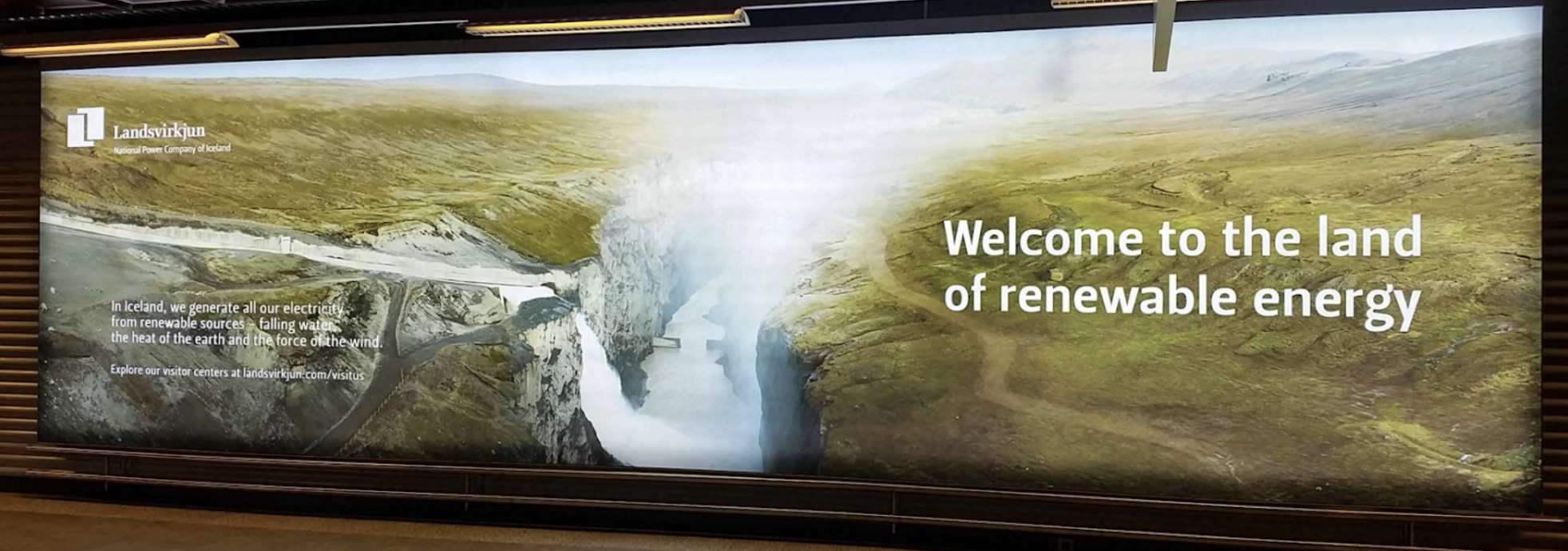by Aunjoli Das
In our last blog, we discussed some of the geophysics of Iceland. In this installment, we discuss how they switched from fossil fuels to geothermal energy.
Although geothermal technology was becoming quite advanced, it was not publicly supported enough to be widely implemented throughout the country. Politicians, engineers, and utility companies needed to negotiate public financing because Iceland was historically dependent on foreign nations for oil. Citizens also needed to be comfortable with discontinuing coal and paying a higher price for geothermal heating. Residents sought reassurance that the energy transition from coal to centralized geothermal would provide better heating. Initial users were unhappy about the flat rate to connect to the geothermal network because it was higher than the annual cost of coal. Consumers also felt that the geothermal system did not provide enough water to heat their homes during the coldest parts of the winter. The Icelandic people, however, were excited about the health and environmental benefits of renewably sourced energy. Burning coal required a lot of manual labor and produced smog that caused respiratory harm. Rising coal prices also prevented working-class families from heating their houses to safe temperatures during the winter. Once the construction of the citywide utility was completed in 1944 and taxes were adjusted to compete with rising coal prices, all of Reykjavík’s inhabitants decided to shift towards geothermal heating. Despite the success in Reykjavík, other townships in Iceland were unable to transition to geothermal heating due to the high cost of exploration drilling and pipeline infrastructure. For the rest of the country, oil was a better solution due to the low startup cost and cleaner combustion compared to coal. Oil was also much more efficient than coal because it was a dense fluid that was easy to store and transport. Geothermal development was at a standstill outside of Reykjavík. While the nation’s capital continued to drill deeper and add pumping mechanisms to improve its utility output, the rest of the country relied on imported oil.
In 1961, the Icelandic Government created the Geothermal Exploration Fund, which gave loans to local governments that covered 50% of drilling costs. This fund invested money into geothermal research and provided aid for failed projects. The investment also incentivized residents to connect with the new geothermal local heating network rather than maintaining reliance on fossil fuels. In 1962, the State Electricity Authority investigated the possibility of transitioning from oil to geothermal energy to gain independence from the expensive foreign oil market. The population distribution in Iceland, however, posed a huge challenge to this endeavor. The metropolitan Reykjavík area had already developed unified grids supplied by large hydropower plants, while the rest of the nation needed much smaller and more dispersed power plants to distribute energy remotely. In 1970, the National Energy Authority conducted a formal cost assessment of oil, electric, and geothermal heating in different parts of Iceland. In Reykjavík, the cost of geothermal heating was half what others were paying for oil and electricity because the import cost of oil had dramatically increased from 1967 to 1969. Iceland had the primary interest in gaining energy independence and leveling heating costs for those living in urban and remote areas.
The expenses of transitioning to geothermal heating were reassessed on the basis that an initial large investment would pay off the long-term cost of steady oil consumption. New geothermal utility plants were built between 1969 and 1973 in Húsavík, Dalvík, Hvammstangi, Seltjarnarnes, and Hrísey. Financing for geothermal drilling projects allowed for the complete eradication of oil in the heating sector during the late 1970s. The dramatic increase in oil prices from 1973 to 1974, also accelerated the energy transition towards renewable sources. In 1979, the construction of a central geothermal power plant for hot water and electricity was completed, alongside a 41 km long pipeline grid.
To make a return on geothermal investments, utility taxes were set lower than the cost of oil heating to incentivize residents to connect to a geothermal power grid. By 1984, the localized small electrical grids around Iceland became connected, which allowed energy from the large geothermal power plants on the Reykjanes Peninsula to be distributed to the Northwest and East. The widespread access to clean energy evened the cost of heating and electricity for inhabitants living in remote and urban areas. The merging of electrical grids and the development of geothermal utilities allowed for the complete decarbonization of Iceland’s heating sector by 1980!
Thanks for following along with this dive into Iceland’s geothermal transition history with us! The last installment in this series will discuss how these lessons can be applied elsewhere around the globe.
Upon arrival, visitors landing at the Keflavík International Airport are greeted with a large sign boasting about the country’s renewable energy system. Image: Jen Stevenson Zepeda



